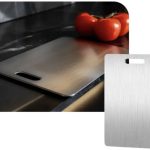The incredibly nutritious and delectable chapati is a must-have in any Indian family. However, choosing the appropriate Atta is critical while preparing this favourite dish. If you’re wondering why atta tastes better, it’s because of its well-balanced consistency, flavour, and, most importantly, nutrition. So, which brand of atta in India is the best? The type of flour you use determines how healthy your dough will be. So, let’s look at the names of the flours and their benefits to see which one you should add to your diet.
- Wheat Flour — Whole wheat flour is the most popular ingredient in Indian households among the various forms of atta. It has a significant level of gluten in it. As a result, it is filtered and processed to minimise it. There are 13 grams of protein in 100 grams of whole wheat flour.
- Benefits: This type of atta is high in bran and fibre; thus, it’s good for you. As a result, it keeps your gut and gastrointestinal system healthy. It’s also a very nutritional complement to your diet because it contains carbs, selenium, copper, manganese and phosphorus.
- Besan or Gram Flour — Besan, a form of atta made from dried chickpeas, is another popular atta in Indian families. It has a nutty flavour and texture that will enhance the flavour of your food. Around 22g of protein is found in 100g of besan.
- Benefits: In addition to being high in protein, besan is also high in minerals like iron, potassium, copper, zinc, phosphorus, folate, and vitamin B6. Besan is frequently used to hydrate and nourish the skin and hair.
- Rice flour — For gluten-intolerant persons, rice flour is an excellent option for atta. This atta is created by crushing broken rice grains and is a South Indian staple. Rice flour has about 6 grams of protein per 100 grams.
- Benefits: It is commonly used in the preparation of infant foods and cereals since it is one of the most easily digestible flours. Rice flour is an excellent source of nourishment because it is high in fibre, proteins, carbohydrates, and minerals like magnesium, etc.
- Maida or All-Purpose Flour — Maida is the most extensively used type of flour in the world, and many people prefer it. It’s well-known for its use in a wide range of cuisines. A 100-gram maida has approximately 11 gm of protein.
- Benefits: While many people enjoy this flour, it is not considered healthful. It contains a lot of gluten, which is difficult to digest and bad for your digestive system. Furthermore, this refined flour is high in protein and some essential minerals like iron and folic acid, copper, and thiamine.
- Multigrain Atta — This is another flour variety that is high in nutrients. Multigrain Atta is prepared by combining different sorts of whole cereals to provide higher nutrition. In general, 100 gm of multigrain atta contains 8.8 mg of protein. The value varies depending on the grains used.
- Benefits: Multigrain Atta, which is made by combining jowar, bajra, wheat, and ragi, is high in fibre and has a low Glycemic Index. As a result, even if you are diabetic, you can always have it worry-free.
You even have other types of atta that are equally healthy and complete in nutrition like almond atta, jowar atta, ragi flour, etc. Basically, a completely healthy diet consists of all of them in some quantities regularly.













